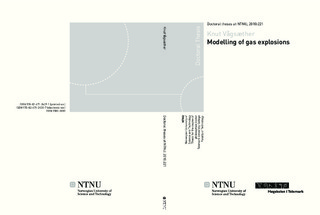| dc.contributor.author | Vågsæther, Knut | nb_NO |
| dc.date.accessioned | 2014-12-19T11:20:23Z | |
| dc.date.available | 2014-12-19T11:20:23Z | |
| dc.date.created | 2011-09-12 | nb_NO |
| dc.date.issued | 2010 | nb_NO |
| dc.identifier | 440218 | nb_NO |
| dc.identifier.isbn | 978-82-471-2430-7 | nb_NO |
| dc.identifier.uri | http://hdl.handle.net/11250/228193 | |
| dc.description.abstract | The content of this thesis is a study of gas explosions in complex geometries and presentation and validation of a method for simulating flame acceleration and deflagration to detonation transition. The thesis includes a description of the mechanisms of flame acceleration and DDT that need to be modeled when simulating all stages of gas explosions. These mechanisms are flame acceleration due to instabilities that occur in fluid flow and reactive systems, shock propagation, deflagration to detonation transition and propagating detonations. The method presented uses the FLIC-scheme for solving the conservation equations of mass, momentum, energy, species and a turbulence model. A reaction rate model that includes both turbulent combustion rates and chemical kinetics to handle turbulence-flame interactions and reactions due to gas compression is designed for simulations of turbulent flames and detonations. Simulation results of gas explosions shows that the presented method can simulate different flame propagation regimes in channels with repeated obstacles like fast deflagrations, quasi-detonation and CJ-detonations. The simulations show the important effects seen in experiments like detonation initiation from shock focusing and flame acceleration from fluid instabilities. Blast waves from high explosives and fuel-air explosives are simulated and results are compared with experimental data. The comparison shows that the numerical solver capture the important waves and that the method can re-produce experimental pressures and impulses with satisfying accuracy. Different tests of the method show that the most significant error sources are numerical diffusion, accuracy of the simplified chemical kinetics and thermodynamic models. The most important points of further research to improve the accuracy of the method is addressed. | nb_NO |
| dc.language | eng | nb_NO |
| dc.relation.ispartofseries | Doktoravhandlinger ved NTNU, 1503-8181; 2010:221 | nb_NO |
| dc.title | Modelling of gas explosions | nb_NO |
| dc.type | Doctoral thesis | nb_NO |
| dc.contributor.department | Norges teknisk-naturvitenskapelige universitet | nb_NO |
